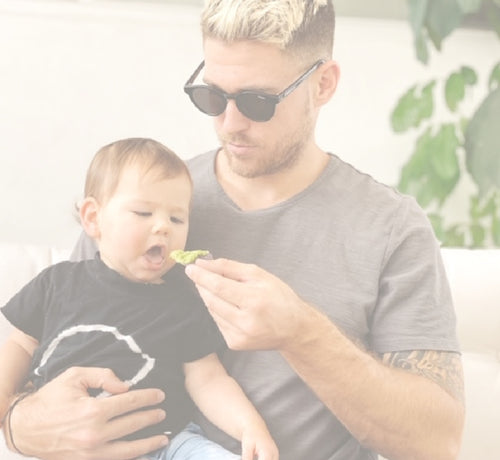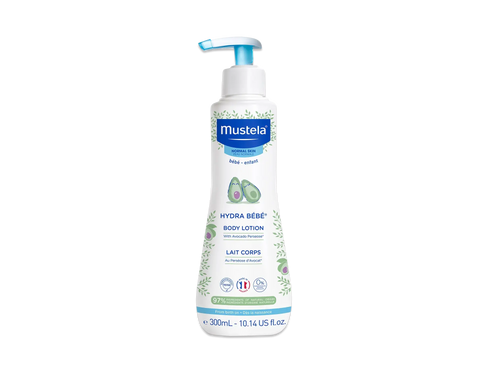So your little one’s a toddler now. Congrats! It’s a milestone that any parent can be proud of. With that milestone, though, comes other things to consider — most notably, how you’re going to structure their 12 month old feeding schedule.
Your baby has grown a lot in the last three months. They’ve gained strength and coordination and are now able to do more on their own in terms of feeding themself. They may have also started exhibiting their own preferences for certain foods and flavors.
You can take advantage of all of that by developing a 12 month old feeding schedule that fits their wants and needs.
In this article, we discuss the ins and outs of introducing your little one to a more structured program of eating that will stay with them into the next stages of their life.
Table Of Contents
- 12 Month Old Feeding Schedule: What To Eat
- 12 Month Old Feeding Schedule: When To Eat
- Sample 12 Month Old Feeding Schedule
- Mealtime Tips For Toddlers
12 Month Old Feeding Schedule: What To Eat

Breast Milk
If you’re still nursing your little one, you can continue to do so as you develop a 12 month old feeding schedule.
Introducing other forms of nutrition (known as complementary foods) alongside your milk is a great way to provide the higher levels of certain nutrients — such as iron, zinc, and vitamins B and D — that toddlers need to continue developing.
If you haven’t already, feel free to introduce new and interesting solid foods into the mix (discussed below) while continuing to breastfeed your little one for the natural comfort and immunity-boosting benefits that only mother’s milk can provide.
Formula
While you may have already transitioned from breast to bottle, reaching the 12-month mark doesn’t mean that you have to stop formula altogether.
Just as with breast milk, continue offering your little one a combination of formula and solid foods so that they get the vitamins and minerals they need to continue growing.
While you may want to set aside a specific time to offer formula or breast milk (such as first thing in the morning and last thing at night), you can also include it as a snack option.
With a combination of formula and solid food, your toddler will have plenty of choices throughout the day and when they get hungry.
Solids
By one year of age, your toddler should have some experience with solid foods.
Continue adding new options to the menu to give them plenty of variety and nutrition, including:
- Bananas
- Peaches
- Strawberries (sliced into small pieces)
- Mango
- Grapes (sliced into halves or quarters)
- Smoothies
- Yogurt
- Milk
- Oatmeal
- Pancakes
- Eggs (scrambled or hard-boiled and cut into bite-sized pieces)
- Tofu
- Ground chicken
- Ground turkey
- Ground beef
- Avocado
- Steamed broccoli
- Steamed peas
- Steamed carrots
- Mashed veggies
- Hummus
Whatever solid foods you choose, take the time to prepare things in such a way that your baby can handle the food but it doesn’t pose a choking hazard.
Mash or puree vegetables, fruits, and other foods until they are smooth. Cook hard fruits and vegetables first so you can easily mash or puree them.
For other foods, cook it first so that it is soft enough to mash with a fork. Remove all fat, skin, and bones from poultry, meat, and fish before cooking.
Remove seeds and hard pits from raw fruit, and then cut the fruit into small, bite-sized pieces or slices. Cut cylindrical foods like hot dogs, sausage, and string cheese into short, thin strips instead of round pieces.
12 Month Old Feeding Schedule: When To Eat

Breast Milk
Consider offering up to eight ounces of breast milk every four or five hours. As we mentioned earlier (and as you’ll see in the sample feeding schedule below), breast milk makes a great meal at the start and end of the day.
It can also be a good snack in the early afternoon if your nursing toddler shows signs of hunger but doesn’t want to eat the solid options you put out.
Formula
Consider offering up to eight ounces of formula every five or six hours. In some cases, you may choose to offer both formula and breast milk as a way to supplement nutrition.
Depending on your little one’s feeding needs, what you’ve done so far, and whether or not you’ve stopped breastfeeding, you may go with only formula several times throughout the day.
Solids
When it comes to the solids in your 12 month old feeding schedule, offer plenty of nutritious options at least three times a day — at regularly-scheduled meals such as breakfast, lunch, and dinner — and several times in-between as snacks.
Sample 12 Month Old Feeding Schedule

As we’ve discussed so far, your toddler may be eating a variety of solids and liquids (including breast milk or formula). We’ve incorporated that into this sample 12 month old feeding schedule so you can find a routine that works well for you and your child.
Keep in mind that the times listed here are approximate. You don’t have to stick to them exactly. They’re just a guide to help you see how to fit everything into your toddler’s busy life.
- Wake Up (7 a.m.): Up to 8 ounces of formula or breast milk
- Breakfast (8 a.m.): Solids such as bananas, yogurt, oatmeal, pancakes, eggs, and tofu
- Morning Snack (10 a.m.): Solids such as goldfish crackers, baby rice puffs, bananas, yogurt, and small pieces of bread
- Lunch (12 p.m.): Solids like steamed green beans, tuna salad, and peanut butter sandwich bites
- Afternoon Snack 1 (2 p.m.): Up to 8 ounces of formula or breast milk
- Afternoon Snack 2 (4 p.m.): Solids such as goldfish crackers, baby rice puffs, bananas, yogurt, and small pieces of bread
- Dinner (6 p.m.): Solids such as chopped hamburger, pasta, grilled cheese, and steamed veggies
- Bedtime (8 p.m.): Up to 8 ounces of formula or breast milk
Mealtime Tips For Toddlers

1) Encourage Them To Start Drinking From A Cup
At this point, your toddler may still be drinking their milk, water, or formula from a bottle. That’s OK. But consider starting to wean your little one now so they’re bottle-free by their second birthday.
Plus, giving them control of their own sippy cup is a great way to develop their coordination.
2) Don’t Force The Snacks
You may find that your toddler isn’t hungry for all the snacks during the day. If this happens, chances are, they’re still full from the solids and breast milk or formula.
Don’t force your baby to eat between meals, but make some options available in case they get hungry.
3) Consider Reducing The Amount Of Formula Or Breast Milk
If breast milk or formula seems to be limiting your little one’s hunger for solids, consider reducing the amount you provide so they can focus on eating the “adult” food that will take them into the rest of their life.
4) Give Them Control
Toddlers are capable of feeding themselves at this age, so feel free to give them control of their own food.
Yes, it’s going to be messy, but they need to develop the skills and coordination that comes from moving solid food from their plate to their mouth.
You may even consider introducing a baby spoon at this point (if you haven’t already) to get them used to big-boy or big-girl ways of eating.
5) Be Flexible
Whether you use the sample 12 month old feeding schedule in this article or make one of your very own, be flexible in how you administer it. Rarely do intentions go exactly as planned — especially where a baby is concerned.
Instead of sticking to a rigid program of feeding, allow your schedule to adjust to the realities of life, but still do your best to give your little one at least three meals a day.
Your Own 12 Month Old Feeding Schedule

Creating your own 12 month old feeding schedule isn’t as difficult as it may sound. Use the sample schedule and menu included in this article to get you started.
Then, follow your little one’s lead, but try to get them into the habit of breakfast, lunch, and dinner (with snacks thrown in here and there, of course) so they’ll be ready for more structured activities like daycare and preschool.
Whatever eating schedule you choose, be sure to have plenty of Cleansing Wipes and No Rinse Cleansing Water on hand! They’re perfect for washing your little one’s hands and face and tidying up the area around them.
With a bit of practice on their part, and plenty of patience on yours, your one-year-old will find a feeding schedule that’s right for them and be on their way to becoming the big boy or big girl that you know they can be!










